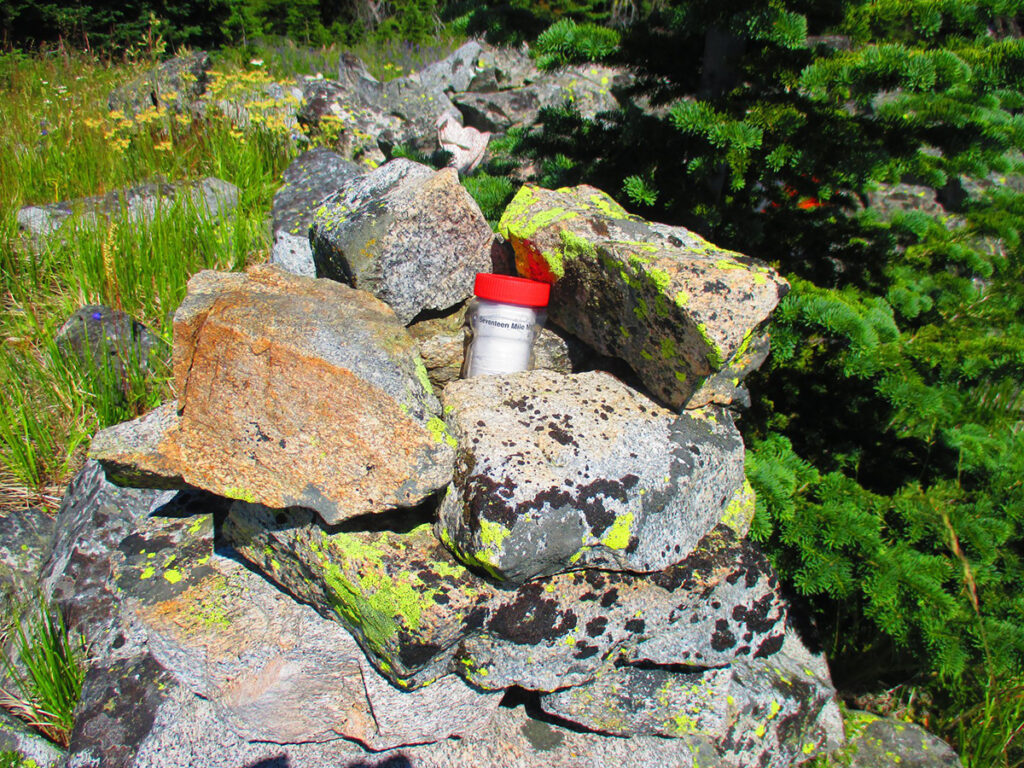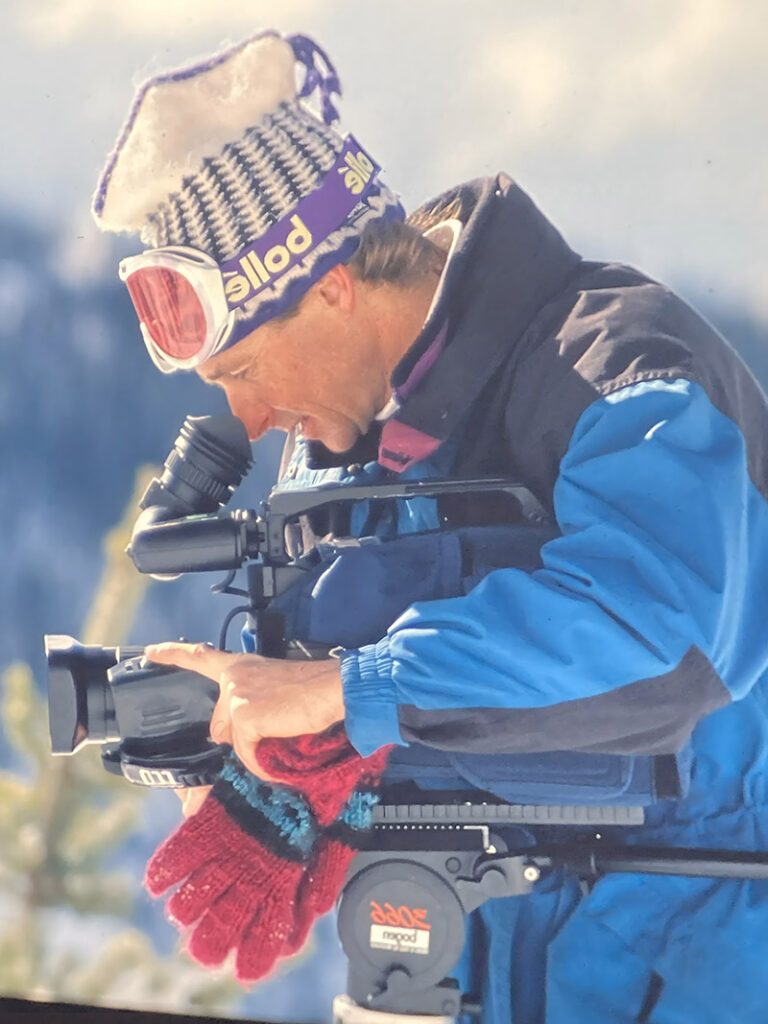Cover photo courtesy of James P. Johnson
By James P. Johnson
Hiking for exercise and the scenery is plenty justification to hike. However, when I find an additional purpose, hiking is even more satisfying.
In the mid-1990s, I compiled a list of the 50 highest mountains in eastern Washington and then hiked to the top of them, hoping to get a hiking guide published. This purpose-adding caused a lot of hiking over four summers, more than I would have done otherwise, and it was a lot of fun and adventure. When the guide came out in 2003, it occurred to me certain peaks might be hard to identify because of lengthy off-trail hiking and/or nearby high points. A summit register would provide confirmation for hikers they’d reached the correct peak. And, coincidentally, another reason for me to go hiking.
I made a summit log and put it inside a clear, plastic jar with a bright lid. At the summit, I made a rock cairn, placed the jar inside and put a covering rock atop, leaving the bright lid visible through gaps between rocks. I placed them at less prominent and less visited summits for the most part. In future summers, I revisited to read them and do maintenance, if needed.
I’ve had experience with other registers. Seemingly more common in Canada than the U.S., finding a register on a hard-to-reach or remote peak adds interest and enjoyment. It’s like joining an exclusive club. There aren’t that many signees, usually. It’s neat seeing how many people hiked up in a season, where they’re from and their comments.

Checking my registers, it’s satisfying to find that others decided to hike the summit and are willing to provide information. I was once especially pleased at a summit, difficult-to-reach because of distance and numerous blowdowns blocking the route, when one comment started with, “I can’t believe this register is here.”
When I hike, I bring sharpened pencils and extra pages to add, but usually the register is in good shape. I once found one drenched, moldy, and difficult to read. Someone must have perused it during a rain or snow storm. I replaced the register and its container.
Several years ago, checking on a few registers in the Salmo-Priest Wilderness, I found they’d all disappeared along with the rock cairns. Returning to the trailhead, I ran into a couple of volunteers doing trail maintenance work. Joining me on the hike out, I mentioned my missing registers. Another member of their group noted that they did not like them, especially the ones in the wilderness area, and got rid of them. Registers were also missing from peaks nearby that weren’t in the wilderness area.
One rule for wilderness areas states that you can’t store personal property in within their boundaries. I think it’s a stretch to say that leaving and maintaining summit registers falls into that category; however, the goal of wilderness areas is to limit human impact, so I chose to respect that ethic and decided not to reestablish ones in wilderness, even though I feel they build camaraderie among hikers. I was disappointed too not being able to read those confiscated registers.
After the high-elevation snow melts, my dual-purpose hiking will resume. If you’re out on the trail and hear pencils bouncing inside plastic jars, be at ease. It’s just summit register maintenance man coming your way.
James P. Johnson’s hiking guide, “50 Hikes for Eastern Washington’s Highest Mountains,” went out of print in 2011, but you can still find summit registers atop certain peaks.













